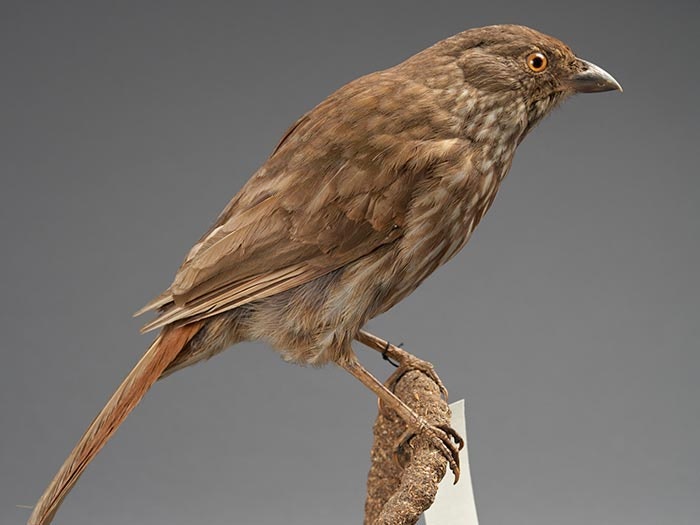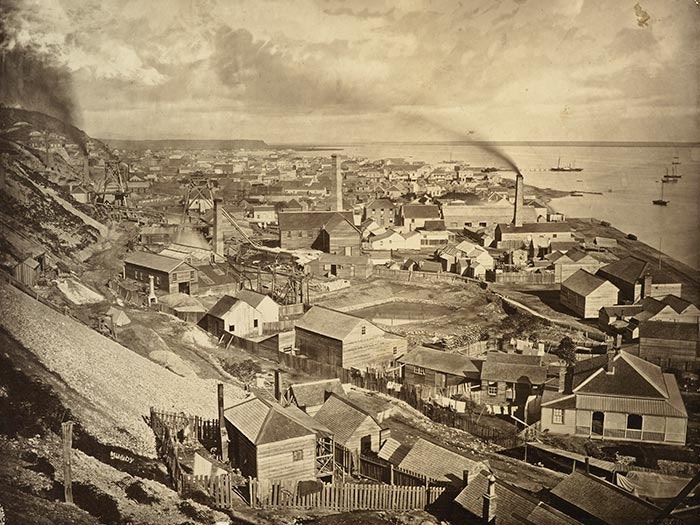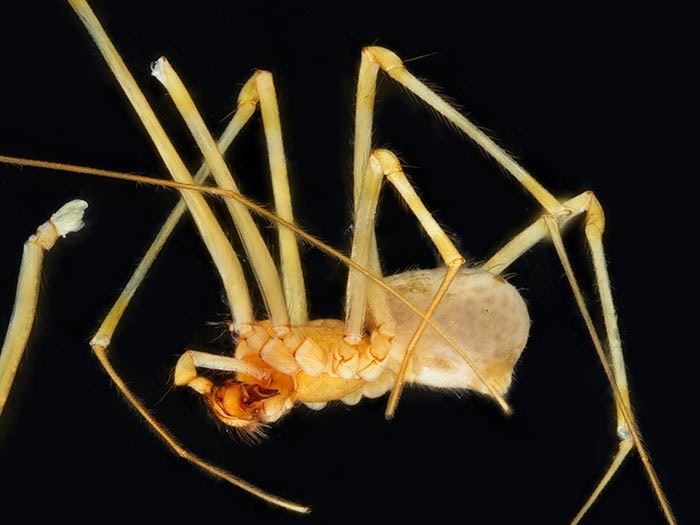
Tuhinga 20, 2009
Edith Morris: Jewellery designer and silversmith examines the works of 20th century Wellington jewellery designer and silversmith Edith Morris.
Go to 20th century Wellington jewellery designer and silversmith Edith Morris
Porotaka hei matau – a traditional Māori tool? suggests that pre-European Māori fish hooks, porotaka hei matau, represent artefacts in their own right, kept and worn as hei kakī (pendants worn around the neck) when no longer used after their function was replaced by European metal tools.
Go to Porotaka hei matau – a traditional Māori tool?
A new subfamily, new genus and new species of terrestrial flatworm (Platyhelminthes: Tricladida: Geoplanidae) from Stewart Island, New Zealand describes the new finds.
Go to A new subfamily, new genus and new species of terrestrial flatworm (Platyhelminthes: Tricladida: Geoplanidae) from Stewart Island, New Zealand
Invertebrate bycatch from bottom trawls in the New Zealand EEZ examines the results of 35 bottom trawls of waters around New Zealand.
Go to Invertebrate bycatch from bottom trawls in the New Zealand EEZ
Collecting photographs: The development of Te Papa’s historical photography collection reviews Te Papa’s collection, which includes works by photographers like the Burton Brothers, Thomas Andrew, Leslie Adkin, Gordon H. Burt, Spencer Digby, Eric Lee-Johnson and Brian Brake.
Go to Collecting photographs: The development of Te Papa’s historical photography collection
Promotional landscapes: D.L. Mundy’s ‘Photographic experiences in New Zealand’ discusses the 19th century English photographer Daniel Louis Mundy and his work ‘Photographic experiences in New Zealand’.
Go to Promotional landscapes: D.L. Mundy’s ‘Photographic experiences in New Zealand’
History of Walter Buller’s collections of New Zealand birds discusses the 310 bird specimens purchased by the Colonial Museum, Wellington, from the important New Zealand ornithologist Walter Lawry Buller. Most of this collection (77%) was lost or destroyed in the 19th century.
Go to History of Walter Buller’s collections of New Zealand birds
A revision of Nomaua (Araneae: Synotaxidae) and description of a new synotaxid genus from New Zealand examines the revision of this genus endemic to New Zealand and includes description of five new species of spider.
Go to A revision of Nomaua (Araneae: Synotaxidae) and description of a new synotaxid genus from New Zealand
Edith Morris: Jewellery designer and silversmith
Moira White
ABSTRACT: The documented history of New Zealand’s silversmiths and jewellers seems to shift from the nineteenth-century immigrant manufacturers, through the Arts and Crafts-influenced first decades of the twentieth century, to the artist jewellers who rose to prominence in the 1970s and continue to be an important aspect of our international craft and art reputation. There is, however, little record of those individuals who worked in the intervening decades. Edith Morris trained in New Zealand and worked as a silversmith and jeweller from her home in Wellington for more than 25 years in the middle of the twentieth century. Visually, conceptually and chronologically, her work can be seen to span and fit between those better known aspects of New Zealand jewellery.
Edith Morris: Jewellery designer and silversmith (3.08 MB)
Porotaka hei matau – a traditional Māori tool?
Chris D. Paulin
ABSTRACT: Distinctive greenstone artefacts catalogued in museum collections as ‘hei matau’ (stylised fishhooks) were manufactured by pre-European Māori. However, some of these taonga lack characteristics found on matau and are not hei matau. They possibly represent artefacts in their own right, kept and worn as hei kakï (pendants worn around the neck) when no longer used after their function was replaced by European metal tools.
Porotaka hei matau – a traditional Māori tool? (1.03 MB)
A new subfamily, new genus and new species of terrestrial flatworm (Platyhelminthes: Tricladida: Geoplanidae) from Stewart Island, New Zealand
Leigh Winsor
ABSTRACT: Within the context of ongoing taxonomic revisions of terrestrial flatworms from the Australia–New Zealand region: the new genus Eudoxiatopoplana is erected; the new species Eudoxiatopoplana bilaticlavia is described from Stewart Island; and the new subfamily Eudoxiatopoplaninae is erected within the family Geoplanidae.
A new subfamily, new genus and new species of terrestrial flatworm (Platyhelminthes: Tricladida: Geoplanidae) from Stewart Island, New Zealand (1.59 MB)
Invertebrate bycatch from bottom trawls in the New Zealand EEZ
Wilma Blom, Richard Webber and Tom Schultz
ABSTRACT: Benthic invertebrate bycatch was collected, as part of the Conservation Services Programme Observer Project, from 35 bottom trawls at water depths ranging from 130m to 1250m, mainly from the northern, eastern and southern edges of the Chatham Rise, the Bounty Plateau, the Campbell Plateau and the southern Norfolk Ridge/Three Kings Rise region. A total of 398 samples had robust locality data and yielded a minimum of 216 separate taxa, from eight phyla. Sponges, branched and unbranched corals, ophiuroids and decapod crustaceans were well represented. The presence of anthozoans appeared to correspond to higher numbers of species at four of the most common trawl locations. The larger branched corals (gorgonians and anthipatharians) were collected predominantly from the Three Kings Rise, the Bounty Plateau and the Campbell Plateau, whereas the smaller forms (actiniarians, scleractininians and other anthozoans) were collected predominantly from the northern and south-eastern Chatham Rise. The lack of an asymptote in the relationship between ‘sampling effort’ (i.e. trawls) and number of species implies that at least some of the assemblages have not yet been ‘fully sampled’.
Invertebrate bycatch from bottom trawls in the New Zealand EEZ (1.44 MB)
Collecting photographs: The development of Te Papa’s historical photography collection
Athol McCredie
ABSTRACT: This article examines the development of Te Papa’s historical photography collection, from its origins in the Colonial Museum to the present. In so doing, it outlines the collection’s contents and shows that the present-day shape of the collection bears the imprint of changing museology and evolving ideas about the role of photography in a museum. It covers the relatively passive collecting by founding director James Hector in the nineteenth century; the concerted effort to build a collection of ethnographic photographs under his successor, Augustus Hamilton; photographic activity by Museum staff during the 20th century; and the acquisition of major collections from the mid-twentieth century to the present. Such collections include works by photographers like the Burton Brothers, Thomas Andrew, Leslie Adkin, Gordon H. Burt, Spencer Digby, Eric Lee-Johnson and Brian Brake, as well as those assembled by photo historians Hardwicke Knight and William Main.
Collecting photographs: The development of Te Papa’s historical photography collection (6.90 MB)
Promotional landscapes: D.L. Mundy’s ‘Photographic experiences in New Zealand’
Lissa Mitchell
ABSTRACT: In December 1874, the British journal the Photographic News published ‘Photographic experiences in New Zealand’ by Daniel Louis Mundy (1826/27–81). The article (which was read before the Photographic Society of Great Britain) described the time Mundy spent taking photographs in New Zealand during the 1860s. As an important account of early landscape photographic practice in New Zealand, the article enables a unique insight into Mundy’s method as a photographer and the rationale behind some of the photographs he took. The project, and subsequent exhibitions and publications, gained Mundy scientific honours but very little artistic or financial reward. This paper looks at the context the article gave Mundy’s photographs and the work he did to promote and publish them in London in 1874 and 1875.
Promotional landscapes: D.L. Mundy’s ‘Photographic experiences in New Zealand’ (13.20 MB)
History of Walter Buller’s collections of New Zealand birds
J.A. (Sandy) Bartleand Alan J.D. Tennyson
ABSTRACT: In 1871, 310 bird specimens were purchased by the Colonial Museum, Wellington, from the important nineteenth-century New Zealand ornithologist Walter Lawry Buller. This was the first large and representative collection of New Zealand birds obtained by the national museum, and it originally included type specimens of 11 species and 23 specimens of birds that are now extinct. Most of this collection (77%) was lost or destroyed in the nineteenth century, and today only 70 of the specimens have been located, with none having the locality and date of collection on the original label. Professional jealousy and a desire to conceal his sources may have been one reason for Buller’s failure to label his specimens at the start of his career, although laxity in recording specimen data was prevalent in New Zealand at the time. Subsequently, the museum was unable to care for these specimens properly, mainly owing to inadequate provision by the government for the museum and its collections. This contrasts with the professional care given to Buller’s later collections of New Zealand birds by Rothschild’s private museum in England, the American Museum of Natural History and the Carnegie Museum of Natural History. The latter two museums each have over 500 New Zealand bird specimens from Walter Buller, and these collections are well documented and still largely intact. Together they provide a precious record of the decline of most New Zealand endemic bird species during the late nineteenth century, which resulted from the introduction of mammalian predators. In this paper, Buller’s collections are used to document the decline and extinction of endemic New Zealand birds. Analysis of the ‘Second’ and ‘Third’ Buller collections showed a decline in the proportion of juveniles of extinct and threatened birds, which may indicate that predation of nests and young, rather than of adults, was a key step in the demise of many New Zealand mainland species. Buller’s assertion that he built up three separate collections of New Zealand birds is shown to be incorrect. Each of these three ‘collections’ was selected from Buller’s own collection, which was not fully disposed of until his death. The number of specimens collected was relatively small, and no evidence was found of Buller’s personal collecting, or collecting on his behalf, significantly impacting on any New Zealand bird species. Nor did Buller profit greatly from the sales of his bird collections.
History of Walter Buller's collections of New Zealand birds (4.87 MB)
A revision of Nomaua (Araneae: Synotaxidae) and description of a new synotaxid genus from New Zealand
Brian M. Fitzgerald and Philip J. Sirvid
ABSTRACT: The genus Nomaua (Araneae: Synotaxidae: Pahorinae), endemic to New Zealand, is revised, including description of five new species (Nomaua urquharti, N. rimutaka, N. repanga, N. taranga and N. rakiura). The female of the type species (Nomauacrinifrons (Urquhart, 1891)) is also described for the first time. The genus Wairua is placed as a new junior synonym of Nomaua. Species of Nomaua are now known from Northland to Stewart Island. A new genus and new species, Zeatupua forsteri (Synotaxidae: Physo - gleninae), related to the Australian genera Tupua and Paratupua, is also described.
A revision of Nomaua (Araneae: Synotaxidae) and a description of a new synotaxid genus from New Zealand (4.05 MB)

